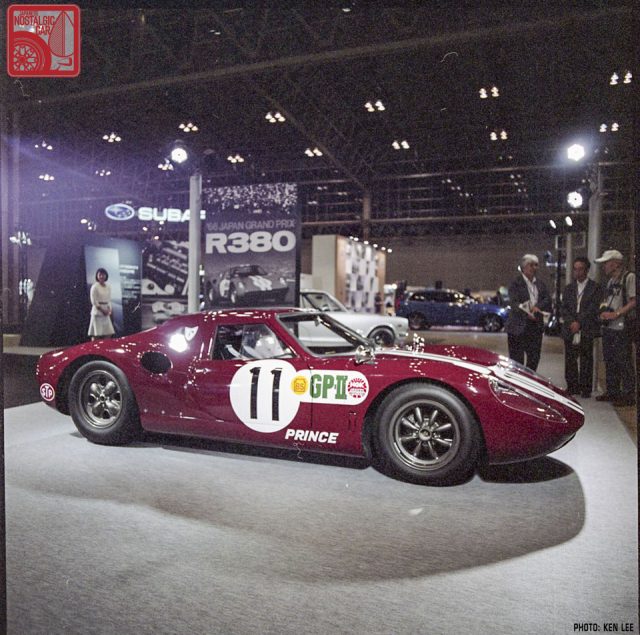
While other Japanese historic racing cars generate equal amounts of enthusiasm and respect, one particular car has sat in relative obscurity for many years. Known only to a few otaku but integral in both the rising dominance of Japanese cars on the global racing scene and in the establishment of the Prince — then Nissan — name in racing, it is the Prince R380.
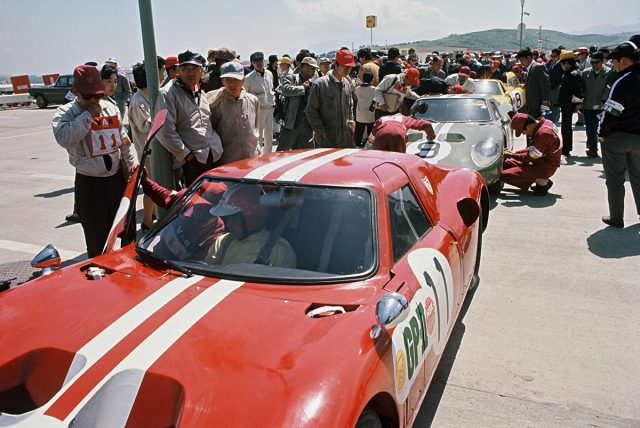
As previously covered during my interview with the legendary Skyline driver Yoshikazu Sunako, Prince’s first notable racing endeavor was with the GT-A, then GT-B Skyline in 1964, briefly overcoming the better-equipped rival Porsche 904 GTS. In the end, however, the Porsche, a pure and purpose-built race car, bested and the Skyline, which was little more than a modified family saloon with a larger engine shoehorned in.
That simply would not do for the legendary Shinichiro Sakurai, known as the “Father of the Skyline” and head of Prince’s motorsports efforts at the time. With his sights set on a rematch, Sakurai-san went on to develop and build a dedicated competition machine, the Sanpamaru, or R380. The R stood for “Racing” and the 380 came from the fact that it was Prince’s 38th project.
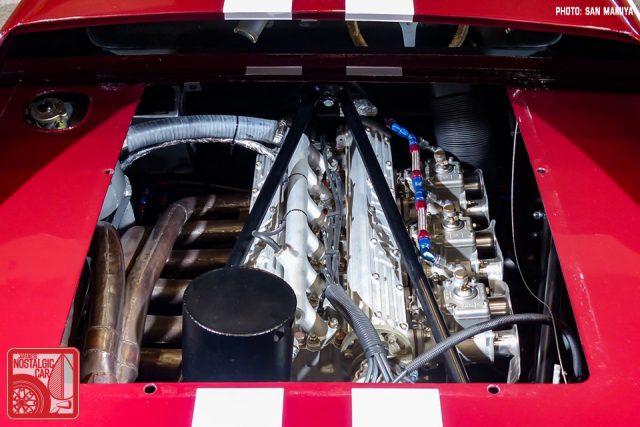
The R380 chassis was based on a reinforced Brabham BT8 design imported from England. The engine, designated a GR8, was developed in-house by the Prince race team. Purpose-built and dry-sumped with a cross-flow head, as well as a deceptively narrow but actually twin-cam design with four valves per cylinder, the GR8 eventually produced over 255 PS (247 horsepower) from its inline-six, 2.0-liter capacity.
The Prince-developed GR8 was to become the basis for the Nissan S20 series, an engine used in both road-going and track cars for a number of years following. Notably, it powered the dominating hakosuka Skyline GT-R, the short-lived kenmeri Skyline GT-R, and the even smaller run Fairlady Z432 and Z432-R, kick-starting Nissan’s rise as a viable motorsport force.



Developed from the summer of 1964 through June of 1965, the R380 was aimed to be entered in the third Japan Grand Prix. Fifty years ago, Prince entered four R380 in the 1966 event accordingly, one of which was to be driven by none other than Sunako-san.
In a field of Toyota 2000GT, Jaguar, and Porsche Carrera 6, Sunako-san went on to win the Japan Grand Prix outright, with the two other R380 finishing in second and fourth. The last R380 retired from the race due to mechanical troubles. During this era, Sunako-san considered his win in the R380 much greater than his herculean effort driving the Skyline GT-B and coming second to the 904 in his previous Japan Grand Prix.

So, with a JNC press invitation to the Automobile Council 2016 show at Makuhari Messe, I avidly packed up my Hasselblad and tripod, and with unrestricted access spent over an hour examining the details of one of Nissan’s historically significant racing machines.
Nissan had helpfully parked their official Sunako #39 recreation next to the R380, and it was possible to notice similarities when viewed side by side. For instance, the R380’s taillights and instruments were the same as on my Skyline GT-B.
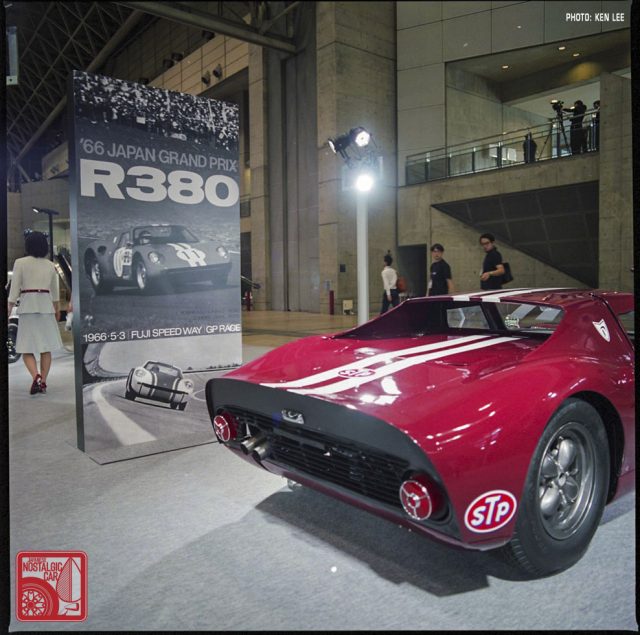
The mismatched RS-Watanabe wheels — 4-spokes on the rear, 8-spokes on the front —have an interesting backstory, which JNC editor Ricky Silverio provided insight into: “When the R380 was still full original fresh off of its win, before Nissan’s restoration, it had the original mismatched wheels, magnesium Brabham Sports Car/Formula 2 wheels on the rear and Kobe Seiko (I cannot recall the model, but these were eventually offered aftermarket in the late-60s and also cribbed by EMPI for their 8-spokes; narrower versions were also used on works Fairlady roadsters as well).
“Anyway, this being a serious racing foray, Nissan decided to use existing race car components for expediency and reliability. In the case of the R380, the midship engine required a rear-mounted Hewland gearbox, which in turn required the use of the Brabham rear suspension, driveshafts and uprights. That’s why the wheels in the back were Brabham wheels.
“In later versions of the R380 this would change, and as they designed bespoke uprights and suspension components, evolved to use bigger rubber and flared fenders. A wider version of the 8 spoke would be utilized up until the R382. After Nissan’s restoration, they replaced those wheels with faithful recreations by RS Watanabe to make it safe when the car performs demonstration laps.”
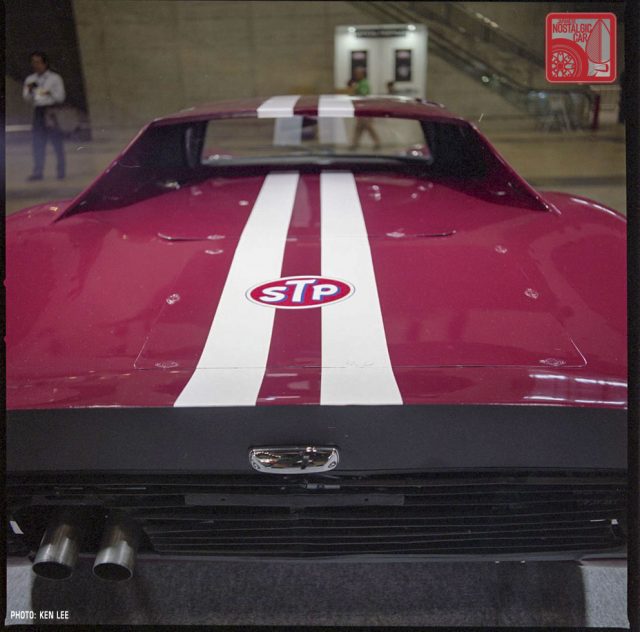
Additional design cues of note included dual off-centered exhaust pipes, twin fillers on the nose and and very non-aerodynamic air intakes for the rear engine. Dzus fasteners on the engine access panels, which would not have been as fast as the clamshell hood of the 904 and cost precious seconds in the pits.
Perhaps the R380’s most fascinating was its Kamm tail with license plate light and frame, hinting at an attempt at road legalization. Like the 904, it was one of the last proper race cars available for street use.
R380 Specifications
Length: 3,930 mm
Width: 1,580 mm
Height: 1,035 mm
Wheelbase: 2,360 mm
Track (Front/Rear): 1,280/1,260 mm
Weight (empty): 620kg
Engine Capacity: 1,996cc
Engine Compression Ratio: 11.0:1
Engine Power: 200PS to 250PS at 8,000+ rpm
Fuel Supply: 3 x Weber 42DCOE
Transmission: Hewland, then ZF 5-speed manual
Tires: Dunlop R6 on the Series I



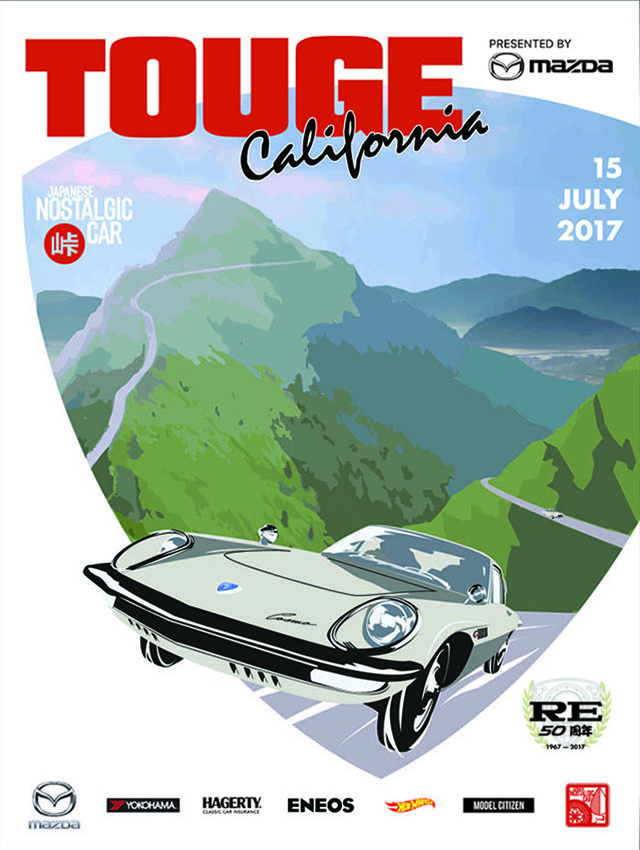


[i]”The engine, designated a GR8, was developed in-house by the Prince race team. It was purpose-built and dry-sumped with a cross-flow head, and though had only a single cam with two valves per cylinder, the GR8 eventually produced over 255 PS (247 horsepower) from its inline-six, 2.0-liter capacity.”[/i]
No, the GR8 was a 24 valve, twin cam design from the beginning.
The Weber carburettors first used were actually 42DCOEs (not 40s) and the name of the wheels from the “Nissan Factory Foundry” (actually an entirely independent supplier) were Kobe Seiko. Those Brabham 4-spoke wheels were the same ones supplied on the Brabham BT8A chassis that was the basis of the car (#SC-9-64) and were Sports Car/F2 items – shared with the BT10 – not F1 items. The exhaust pipes were ‘off-centred’ because that’s the way they come off the engine and straight back, not to make space for a license plate. The first – record breaker – guise of the car had a flat centre panel with a license-plate sized flat centre recess (a tip of the hat to roadgoing cars perhaps), whereas the second (A-I) guise had the full-width rear grille and no centre recess.
It’s worth making the distinction about what we are actually looking at here. The car – as it exists now – is in ‘R380A-I’ guise. That’s a development step on from the original record-breaking car of 1965 (‘R380-I’), with many changes – particularly to the bodywork, but still retaining the original Brabham-built chassis. The three other ‘R380A-Is’ in the 1966 (3rd) Japan GP were effectively Prince-built cribs of that original Brabham chassis, carrying many original Brabham components, but with the similarly updated A-I style CFRP bodywork, updated GR8s (on 45DCOEs) and Kobe Seiko 8-spoke wheels with the wider 6.50L Dunlop R7s on the rear.
I was privileged to play a small part in the restoration/refurb of the car, sourcing and supplying some original spec componentry (Brabham, Girling, Lockheed, Armstrong) and data.
Yikes! Twin cammed? Looking at the pic – and other internet references – it does not look wide enough for a twin cam?
Unless the Weber are mounted between the cams?
The G7R (supposedly) has a much wider, and very obvious twin-cam head? More details would be great!
The two castings with the ‘Prince’ lettering are the cam covers. The inlet side cam also drives the distributor. It’s a very narrow angle head so it looks deceptive, but if you imagined the two separate cam covers turned into one to cover the two cams plus the spark plug holes (and the coolant distribution pipe relocated to the side of the engine as on the S20) then it would not look so odd.
I’m not sure if this will work, but here’s a photo of the front of the engine in question, which hopefully makes things a little clearer:
http://imagizer.imageshack.us/v2/640x480q90/923/VrE1my.jpg
Cut and paste my link and it should work…
Do you have any other pictures, most specifically the exhaust side of the block?
I am also curious. Did this design get borrowed from Mercedes since Prince had the licenses to produce their engines.
You can always count on Alan to keep you on your toes! I’ve updated the post to reflect your insights.
Still listed as two valves per cylinder in the article. The engine is actually 4 valve
Got it, thanks!
Perhaps “relative obscurity”, certainly “near complete unobtanium”. Anyone seen one in the wild lately?
I imagine It’d be most welcomed in any historic 2000cc class.